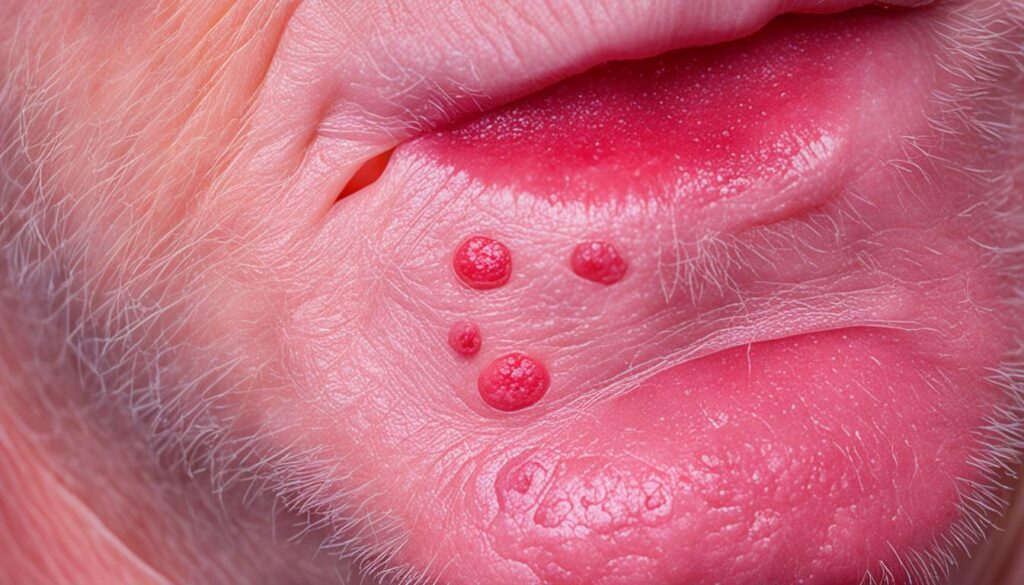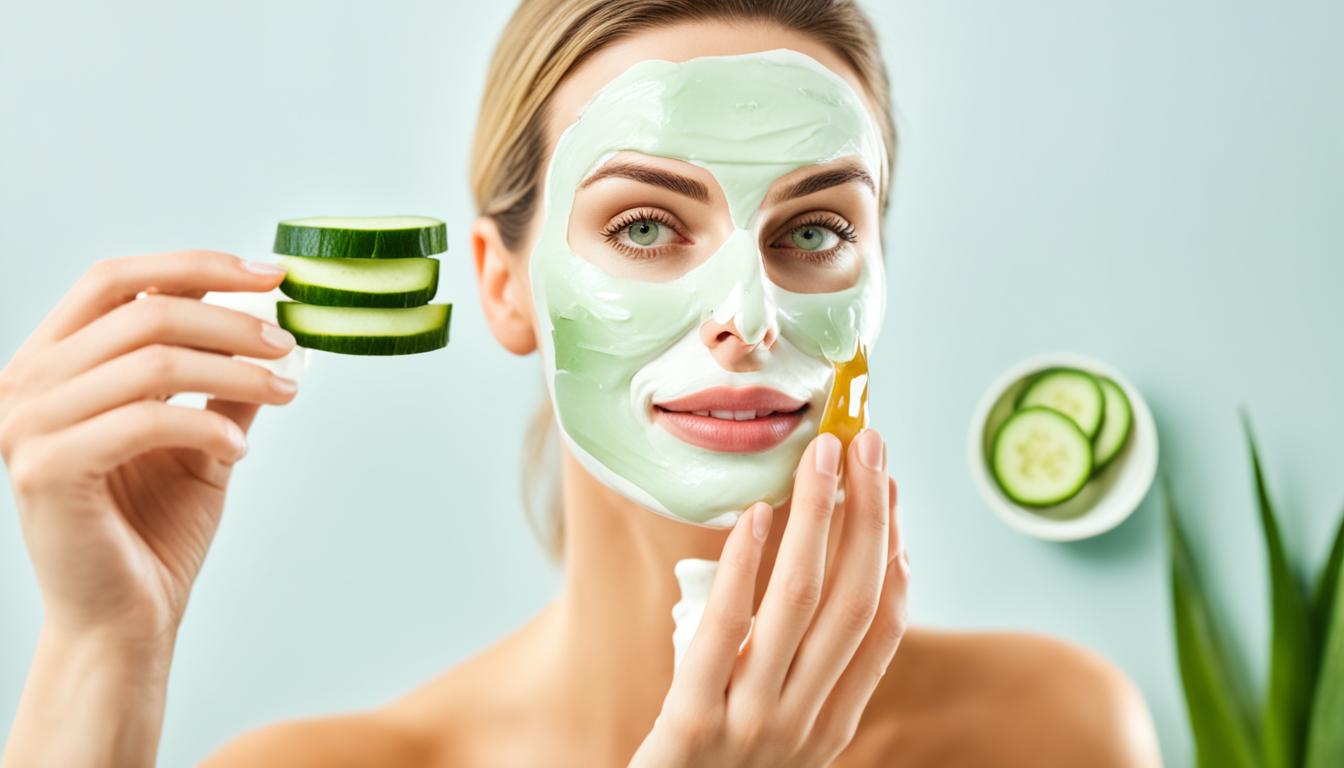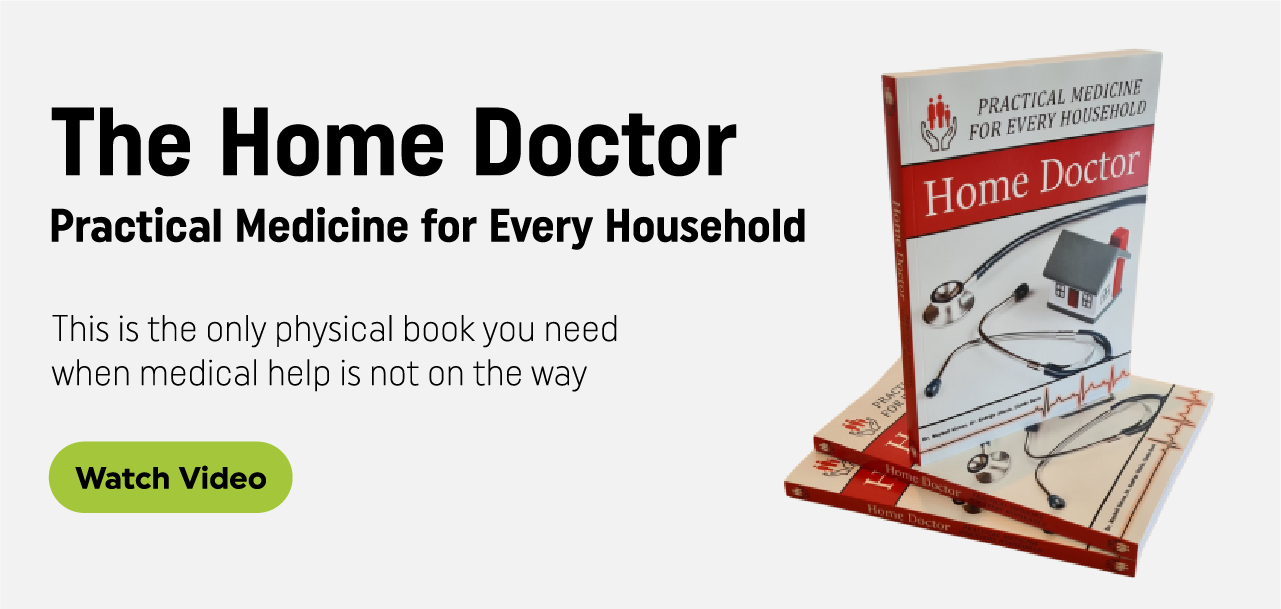Perioral dermatitis is a common facial skin rash that can be quite bothersome. The good news is, there are Perioral Dermatitis Natural Treatments that can effectively treat this condition and help you achieve clearer skin. In this article, we will explore various at-home remedies for perioral dermatitis that are safe, gentle, and free from harsh chemicals.
One of the natural remedies for perioral dermatitis is the use of essential oils. Tea tree oil, neem oil, and lavender oil have antimicrobial and anti-inflammatory properties that can soothe the skin and reduce redness. Apple cider vinegar is also known for its antimicrobial properties and can help balance the skin’s pH levels. Aloe vera, grape seed extract, honey, and yogurt are other natural ingredients that can provide relief from the symptoms of perioral dermatitis.
By incorporating these natural remedies into your skincare routine, you can effectively manage perioral dermatitis without relying on medications or harsh chemicals. These remedies not only help soothe the skin but also promote clearer, healthier skin in the long run.
Watch Video: Practical Medicine for Every Household
Key Takeaways:
- Perioral dermatitis is a common facial skin rash.
- Natural remedies like essential oils, apple cider vinegar, aloe vera, grape seed extract, honey, and yogurt can provide relief from perioral dermatitis.
- These remedies possess antimicrobial, anti-inflammatory, and soothing properties.
- By incorporating these remedies into your skincare routine, you can achieve clearer skin without relying on harsh chemicals.
- Consulting with a healthcare professional is important for an accurate diagnosis and personalized treatment plan.
What Is Perioral Dermatitis?
Perioral dermatitis is a facial skin rash that is characterized by scaly, red bumps called papules. These papules typically appear around the mouth, nasolabial folds, and eyes. In some cases, perioral dermatitis can also affect the forehead and genitals. The rash closely resembles other skin conditions such as acne vulgaris, rosacea, and contact dermatitis.
Perioral dermatitis is more commonly observed in women aged 20 to 45 years and in children younger than 13 years. It is essential to differentiate perioral dermatitis from other skin conditions to ensure proper treatment.
The image below provides a visual representation of perioral dermatitis rash:
Causes of Perioral Dermatitis
The exact cause of perioral dermatitis is unknown, but several factors can contribute to its development. Understanding these causes of perioral dermatitis can help in its prevention and management. Some of the common triggers or factors include:
- Prolonged use of topical steroids, such as hydrocortisone
- Use of anti-aging creams containing potentially irritating ingredients
- Nasal or oral steroids
- Certain cosmetic creams and makeups
- Sunscreens with harsh chemicals or fragrances
- Fluoride toothpaste
- Hormonal changes, such as during pregnancy or menstruation
- Poor facial hygiene, such as overwashing or using harsh cleansers
While these factors can contribute to the development of perioral dermatitis, it’s important to note that the condition may vary from person to person. Some individuals may be more susceptible to certain triggers than others. Identifying and avoiding these triggers can help manage and prevent recurrences of perioral dermatitis.
Impact of Topical Steroids
Topical steroids, such as hydrocortisone, are commonly used to treat various skin conditions. However, prolonged use or overuse of these steroids can disrupt the skin’s natural barrier and lead to the development of perioral dermatitis. This is known as steroid-induced perioral dermatitis. The exact mechanism behind this is not fully understood, but it is believed that steroids can alter the balance of the skin’s microbiome, leading to inflammation and the proliferation of certain bacteria.
Perioral dermatitis can be triggered by the prolonged use of topical steroids, such as hydrocortisone, which can disrupt the skin’s natural barrier and lead to inflammation and bacterial overgrowth.
When using topical steroids, it is important to follow the prescribed dosage and duration. If you suspect that your perioral dermatitis may be steroid-induced, consult a healthcare professional for appropriate management options.
Factors Influencing Hormonal Changes
Hormonal changes, such as those that occur during pregnancy or menstruation, can also contribute to the development or worsening of perioral dermatitis. Fluctuations in hormone levels can disrupt the skin’s normal functioning, leading to increased oil production and inflammation. Women with hormonal imbalances or conditions such as polycystic ovary syndrome (PCOS) may be more prone to perioral dermatitis.
It’s important to note that while hormonal changes can be a contributing factor, perioral dermatitis is not exclusively a hormonal condition. It can affect individuals of all genders and age groups. Therefore, addressing other triggers and maintaining a good skincare routine is essential for managing the condition.
| Contributing Factors | Effect on Perioral Dermatitis |
|---|---|
| Prolonged use of topical steroids | Disrupt the skin’s natural barrier and alter the microbiome, leading to inflammation and bacterial overgrowth. |
| Use of cosmetic creams and makeups with potentially irritating ingredients | Can cause skin irritation, inflammation, and clogged pores, contributing to the development of perioral dermatitis. |
| Sunscreens with harsh chemicals or fragrances | Can cause skin irritation and trigger inflammation, worsening the symptoms of perioral dermatitis. |
| Fluoride toothpaste | Excessive fluoride exposure can irritate the skin around the mouth, leading to perioral dermatitis. |
| Hormonal changes | Fluctuations in hormone levels can disrupt the skin’s normal functioning and contribute to the development of perioral dermatitis. |
| Poor facial hygiene | Overwashing or using harsh cleansers can disrupt the skin’s natural balance and contribute to the development of perioral dermatitis. |

Symptoms and Diagnosis of Perioral Dermatitis
Perioral dermatitis is characterized by various symptoms that can help in its diagnosis. Common signs of perioral dermatitis include:
- Red eruptions on the skin around the mouth
- Clusters of small red papules
- Sparing of the skin adjacent to the lips
- A burning sensation
- Itching
- Irritation
- Dry, flaky skin
These symptoms may vary in severity from person to person, but their presence can indicate perioral dermatitis.
Diagnosis of perioral dermatitis is typically based on a visual examination of the rash and its characteristic presentation. Healthcare professionals look for specific patterns and characteristics of the rash to differentiate it from other skin conditions. In some cases, a skin culture or biopsy may be performed to rule out other conditions or confirm the diagnosis.
It is important to consult a healthcare professional for an accurate diagnosis of perioral dermatitis to ensure appropriate treatment and management.

Seeking Medical Advice
If you experience any of the aforementioned symptoms or suspect you may have perioral dermatitis, it is crucial to consult with a healthcare professional. They can evaluate your condition, provide a proper diagnosis, and offer guidance on the most effective treatment options for managing perioral dermatitis.
Perioral Dermatitis Natural Treatment
Perioral Dermatitis Natural Treatment involves a combination of lifestyle changes and topical or oral medications. It is important to address the underlying causes and triggers of perioral dermatitis to effectively manage and treat the condition.
Lifestyle Changes
One of the first steps in treating perioral dermatitis is to discontinue the use of topical steroids, cosmetic creams, sunscreens, and other potentially irritating products. These can exacerbate the symptoms and prolong the healing process.
A gentle skincare routine is essential for improving symptoms and promoting skin healing. Use mild, fragrance-free cleansers and moisturizers that won’t further irritate the affected area. Avoid excessive scrubbing or rubbing, as this can aggravate the condition.
It is also important to maintain good facial hygiene. Wash your face twice a day with lukewarm water and pat it dry gently. Avoid touching or picking at the affected area, as this can introduce bacteria and worsen the condition.
Natural Remedies
Several natural remedies can help soothe the skin and reduce inflammation associated with perioral dermatitis. These remedies possess antimicrobial and anti-inflammatory properties, making them effective additions to treatment regimens.
Aloe vera has been used for centuries for its healing properties. Apply pure aloe vera gel to the affected area to soothe inflammation and promote healing.
Apple cider vinegar can also be beneficial in managing perioral dermatitis. Dilute apple cider vinegar with water and apply it to the affected area using a cotton ball. The acetic acid in apple cider vinegar helps balance the skin’s pH and reduce inflammation.
Essential oils like tea tree oil, neem oil, and lavender oil have antimicrobial properties that can help combat the bacteria causing perioral dermatitis. Dilute these oils with a carrier oil, such as coconut oil, before applying them to the affected area.
Medical Treatment
In some cases, medical intervention may be necessary to manage perioral dermatitis. If the condition is severe or persists despite lifestyle changes and natural remedies, a healthcare professional may prescribe topical or oral medications.
Topical medications such as metronidazole gel or cream, azelaic acid cream, or sulfur cream can be prescribed to reduce inflammation and kill bacteria. These medications are typically applied directly to the affected area.
Oral antibiotics may be prescribed for a short period if the perioral dermatitis does not respond to topical treatments alone. Oral antibiotics can help control the bacterial infection and alleviate symptoms.
It is important to consult with a healthcare professional for proper treatment guidance. They will consider the severity of your condition and develop a personalized treatment plan that suits your needs.
Conclusion
Perioral dermatitis can be effectively managed and treated through the use of natural remedies and lifestyle changes. By understanding the causes and triggers of perioral dermatitis, individuals can take proactive steps to find relief from symptoms and achieve clearer skin.
Consulting with a healthcare professional is crucial in order to receive a proper diagnosis and personalized treatment plan. They can guide you in implementing the most effective remedies for your specific condition.
Taking a holistic approach to skincare, including the use of natural remedies like aloe vera and essential oils, can be beneficial in managing perioral dermatitis and promoting overall skin health. By avoiding harsh chemicals and incorporating gentle, soothing products into your routine, you can help alleviate symptoms and prevent future flare-ups.


